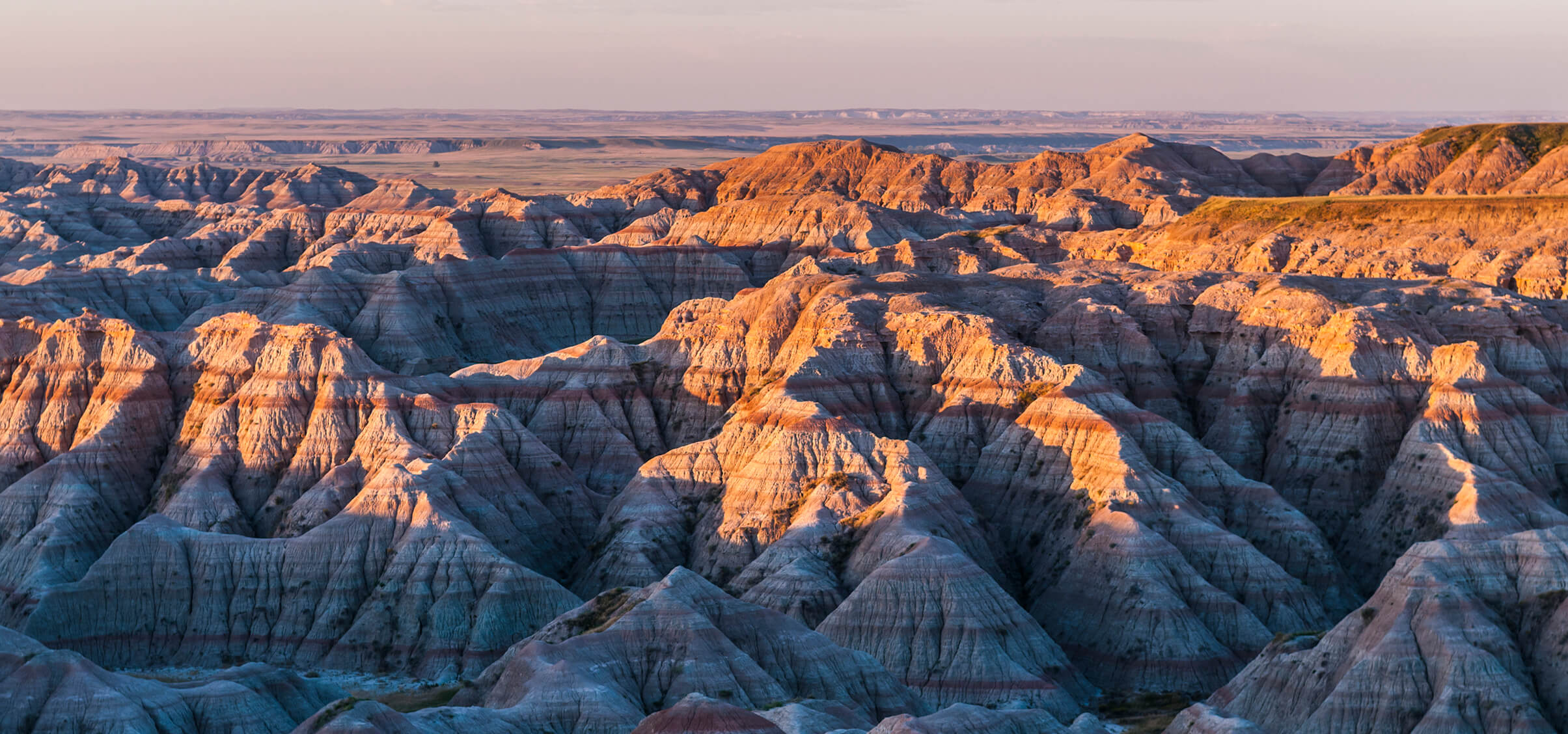
Echoes in the Eroded Earth: Tracing Ancient Paths in the Badlands, A Traveler’s Guide Through Native American Perspectives
The Badlands. The name itself conjures images of stark, unforgiving beauty – a landscape carved by millennia of wind and water into a labyrinth of spires, buttes, and dramatic canyons. While modern travelers navigate its scenic loop roads and marked hiking trails, the true essence of this extraordinary place lies not just in its visible geology, but in the invisible "maps" etched into the minds and oral traditions of its original inhabitants, the Lakota people. To truly experience the Badlands is to move beyond the tourist overlooks and attempt to see it through their ancient eyes, understanding the wisdom embedded in their deep connection to this land.
Forget the conventional tourist brochures for a moment. Imagine approaching the Badlands not with a GPS, but with generations of accumulated knowledge: where to find potable water in a parched landscape, which rock formations offered shelter from sudden storms, the best routes for hunting bison, and the sacred spots for vision quests. This is the perspective we seek to unlock, turning a mere visit into a profound journey into history and culture.
The Landscape: A Geologist’s Dream, A Traveler’s Revelation

Badlands National Park, located in southwestern South Dakota, is a geological marvel. Spanning over 244,000 acres, it’s a testament to the relentless power of erosion. The landscape is a mosaic of colorful sedimentary layers – reds, browns, tans, and grays – that tell a story spanning millions of years. Once an ancient seabed, then a lush forest, and later a flood plain, the Badlands today is a dramatically eroded showcase of volcanic ash, river deposits, and fossilized life. Its stark, otherworldly appearance has earned it the Lakota name "Mako Sica," meaning "bad lands" – a reference to the challenging terrain that made travel difficult.
Yet, amidst this apparent desolation, life thrives. Bighorn sheep navigate impossibly steep slopes with grace, prairie dog towns buzz with activity, and herds of bison graze on the resilient prairie grasses. Eagles soar overhead, and rattlesnakes bask in the sun. The Badlands is a land of contrasts: harsh yet beautiful, barren yet teeming with life, silent yet echoing with stories. Sunrise and sunset paint the formations in hues of fire and shadow, transforming the landscape into an ever-changing masterpiece that captivates every visitor.
Native American Connection: More Than Just Territory
For the Lakota (Oglala Sioux) people, the Badlands was far more than just "bad lands" for travel. It was a landscape imbued with spiritual significance, a place of refuge, and a critical source of sustenance. Their relationship with the Badlands was holistic, built on centuries of interaction, observation, and respect. Their "maps" were not static lines on a parchment, but dynamic, living constructs woven into their culture.

These "maps" manifested in several ways:
- Oral Traditions: Stories, songs, and ceremonies were repositories of geographical knowledge. Place names weren’t arbitrary; they described features, warned of dangers, or celebrated resources. A specific ridge might be named "Where the Eagles Nest" (Ptaŋyétu Wičhákičhiyuha Oyáŋke) or a hidden spring "Life-Giving Water" (Mní Wakáŋ Oyáŋke), guiding people to vital locations.
- Mental Maps: Passed down through generations, this intimate knowledge allowed individuals to navigate vast distances without visual landmarks, relying on subtle shifts in elevation, wind patterns, star constellations, and the feel of the earth underfoot. They understood the seasonal changes, where game would congregate, and which plants offered food or medicine.
- Practical Maps: These were the trails themselves – not carved pathways, but well-worn routes known only to those who lived there. They connected water sources, hunting grounds, and ceremonial sites, often following game trails or the easiest passages through treacherous terrain. These paths were etched into the landscape by countless footsteps, as visible to an experienced eye as any modern road sign.
- Spiritual Maps: Certain formations held profound spiritual meaning, serving as sites for vision quests, prayer, or ancestral connection. Stronghold Table, a prominent butte within the Pine Ridge Reservation adjacent to the park, was one such sacred place, offering both defensive advantage and spiritual solace. These sacred points anchored their understanding of the land, connecting the physical with the metaphysical.

For the Lakota, the Badlands was not merely territory to be traversed, but Maka Ina (Mother Earth), a living entity that demanded respect and offered sustenance. Understanding this deep, reciprocal relationship is key to appreciating the Badlands beyond its surface beauty.
Navigating the Badlands: Modern Trails, Ancient Wisdom
Today’s traveler primarily experiences Badlands National Park via the Badlands Loop Road (Highway 240) and its network of marked trails. Yet, by consciously overlaying the indigenous perspective, each stop becomes more meaningful.

Driving the Scenic Loop (Highway 240): As you drive this paved marvel, stopping at overlooks like Pinnacles, Yellow Mounds, and Panorama Point, consider their significance to the Lakota. These panoramic vistas were not just photo opportunities; they were strategic lookout points. From these elevated positions, hunters could survey vast distances for bison herds, warriors could spot approaching rivals, and families could identify distant storms. The Lakota didn’t just see the landscape; they read it – interpreting every shadow, every shift in color, every cloud formation as a piece of a larger, living map. The vibrant Yellow Mounds, for instance, might have been a distinctive marker on a longer journey, or a source of particular pigments for ceremonial use.
Hiking the Trails: The park offers a range of trails, from easy boardwalks to strenuous backcountry routes.
- Door Trail, Window Trail, Notch Trail: These popular, shorter trails plunge you directly into the formations. As you squeeze through narrow canyons or climb ladders, imagine the Lakota navigating these same passages, not as recreational hikers, but as people seeking shelter, searching for water, or moving silently through the landscape. The "notch" in the Notch Trail might have been a critical, known shortcut through an otherwise impassable ridge, a vital piece of their practical map.
- Fossil Exhibit Trail: While focusing on ancient mammals, this trail also subtly connects to the deep time the Lakota understood, albeit through a different lens. For them, the fossils found here might have been evidence of mythical creatures, giants, or ancestors, contributing to their oral histories and spiritual understanding of the land’s ancient past.
- Medicine Root Trail & Castle Trail: These longer trails offer a more immersive experience, traversing both prairie and badlands formations. Here, you are walking through what would have been prime hunting grounds and resource-gathering areas. Consider the subtle markers the Lakota would have used: a uniquely shaped rock, a certain type of plant, a shift in soil color, all serving as internal compass points and indicators of resources.
Wildlife Viewing: Spotting bison, bighorn sheep, and prairie dogs isn’t just a picturesque moment; it’s a glimpse into the natural cycles the Lakota lived by. Their "maps" included intricate knowledge of animal migration routes, watering holes, and seasonal behaviors, all tied to specific geological features. A prominent butte might be known as a bighorn sheep birthing ground, or a particular flat an ideal spot for bison hunting.
Experiencing the Badlands Through Lakota Eyes
To truly honor the spirit of the Badlands and its indigenous history, a traveler must do more than just observe.
- Slow Down and Listen: Resist the urge to rush from one overlook to the next. Park your car, step out, and simply be. Listen to the wind whistling through the formations, the silence of the vast prairie. Feel the sun on your skin, the ancient earth beneath your feet. Try to imagine the sounds of a Lakota camp, the distant cries of animals, the rustle of tipis.
- Engage Your Imagination: As you gaze at a particularly striking formation, ask yourself: How would the Lakota have named this? What story would they have associated with it? Would it have been a landmark for navigation, a place of spiritual power, or a source of a specific resource?
- Seek Out Cultural Context: While Badlands National Park itself is primarily a natural preserve, its Ben Reifel Visitor Center often features exhibits on Lakota history and their relationship with the land. For a deeper dive, consider a respectful visit to the nearby Pine Ridge Indian Reservation, home of the Oglala Lakota. Engaging with tribal cultural centers, if open to visitors, can offer invaluable insights. Always research and respect tribal protocols and requests when visiting sovereign lands.
- Consider the Practicalities: Without modern infrastructure, how would you survive here? This thought experiment fosters immense appreciation for the sophisticated knowledge and resilience of the Lakota. Where would you find water? Build shelter? Find food? This mental exercise transforms the abstract idea of "Native American maps" into a tangible understanding of survival and intimate ecological knowledge.
- Look for the Unseen: The Badlands is a landscape of constant change. Erosion continues its slow, powerful work. For the Lakota, this dynamism was part of its living essence. Their maps were not static, but adaptable, recognizing that the land itself was a constantly evolving entity. Every ripple in the earth, every change in vegetation, told a story.
By consciously adopting this perspective, the Badlands transforms from a beautiful but inert landscape into a living repository of history, wisdom, and profound spiritual connection. It becomes a giant, geological map, waiting for you to learn its language.
Practical Travel Guide
- Best Time to Visit: Spring (April-May) and Fall (September-October) offer pleasant temperatures, fewer crowds, and stunning light for photography. Summers can be hot with frequent thunderstorms, while winters are very cold and can bring snow.
- Accommodation: The park has one lodge, Cedar Pass Lodge, and two campgrounds (Cedar Pass and Sage Creek Primitive). Nearby towns like Wall and Interior offer additional lodging and dining options.
- What to Bring: Water is paramount – carry more than you think you’ll need, especially for hiking. Sunscreen, a wide-brimmed hat, and sunglasses are essential. Sturdy hiking shoes are a must for any off-boardwalk exploration. Layers of clothing are advisable due to fluctuating temperatures. Don’t forget binoculars for wildlife viewing and a good camera. Always carry a physical map of the park, even with GPS.
- Respect and Responsibility: Practice Leave No Trace principles. Stay on marked trails to protect fragile ecosystems and avoid disturbing wildlife. If visiting tribal lands, always be respectful of their culture and customs, and adhere to any posted rules or requests.
Conclusion
A journey through Badlands National Park is inherently breathtaking. But by seeking to understand it through the lens of Native American maps – not just the physical routes, but the cultural, spiritual, and practical knowledge embedded in generations of Lakota life – the experience deepens immeasurably. You’ll not only witness the stunning geology but also feel the pulse of an ancient land, guided by the echoes of those who knew its every secret. It’s an invitation to travel beyond the visible, to connect with the sacred heart of the Badlands, and to appreciate the profound wisdom of its first navigators.


